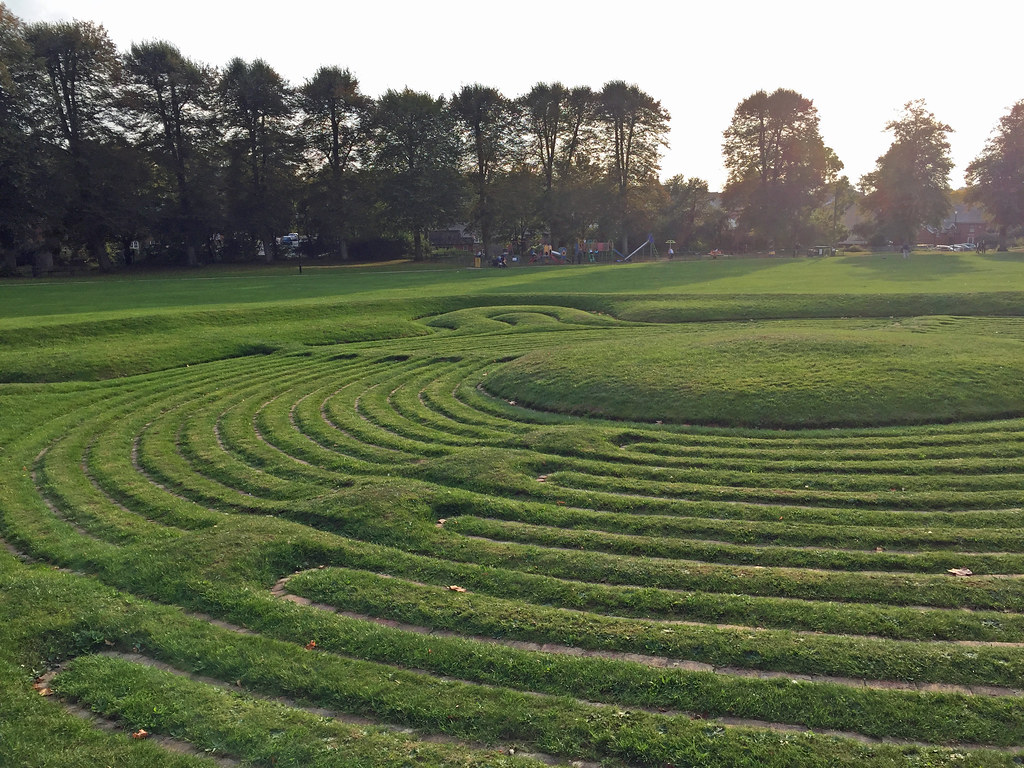The Saffron Walden Turf Maze is one of the most intriguing historical sites in the UK. It’s a large, circular labyrinth located in the town of Saffron Walden, Essex. Unlike stone and hedge mazes, turf mazes are cut into the grass, creating a path defined by the earth itself. This particular maze is one of the finest and most preserved examples of its kind, with a history that captures the imagination of historians and visitors alike.
Get your dose of History via Email
Historical Background of Saffron Walden Turf Maze
The Saffron Walden Turf Maze, also known as the ‘Maze’ or ‘Turf Labyrinth’, is steeped in mystery. Its origins are uncertain, but it’s believed to date back to the medieval period. The maze was first documented in 1699, although it likely existed long before then. It’s thought to have been created by the local people, but the exact individuals or group responsible remain unknown.
Over the centuries, the maze has seen various restorations, the most recent being in the 1970s. These efforts have ensured its survival and continued visibility. The maze has not been the scene of any known historical events, but it has been a focal point for local traditions and festivities. It’s a place where the community has gathered for generations, adding to its historical significance.
Unlike some other historical sites, there’s no evidence that the Saffron Walden Turf Maze was inhabited or used for defensive purposes. Its purpose seems to have been purely for contemplation or amusement. The maze has not been directly associated with any significant historical figures, but it has been a landmark in the town for as long as the local memory can recall.
The design of the maze is similar to other turf mazes in Europe, suggesting a shared cultural or spiritual significance. However, the Saffron Walden maze is unique in its complexity and size, which has made it a subject of particular interest. It’s one of the few remaining turf mazes in England, marking it as an important cultural and historical artifact.
While the maze itself has not been the site of pivotal historical events, its endurance through time speaks to the value placed on it by the local community. It remains a testament to the town’s heritage and a symbol of the enduring human love for mystery and play.
About Saffron Walden Turf Maze
The Saffron Walden Turf Maze is a labyrinthine design cut into the turf of the common land known as the ‘Maze’. It spans about 100 feet in diameter, making it one of the largest turf mazes in the world. The path is outlined by trenches cut into the grass, which are then filled with chalk to make the design visible.
The maze follows a circular pattern with intricate loops and spirals, leading to a small mound at the center. The design is complex, with a single, meandering path that takes a deliberate and contemplative journey to the center. The construction method is simple yet effective, relying on the contrast between the green grass and the white chalk to define the path.
No records exist detailing the original construction materials or methods. However, the maintenance and restorations over the years have used materials like chalk and gravel to keep the path defined. The maze’s design is similar to the classical seven-circuit labyrinth, which has been used in various cultures throughout history.
Architectural highlights of the maze are its size and the precision of its design. The layout is geometrically intricate, requiring careful planning and execution. The maze’s design suggests a deep understanding of geometry and space, which adds to its historical and cultural value.
The turf maze is not only a historical artifact but also a living part of Saffron Walden’s culture. It continues to be a place for play, reflection, and community events, bridging the past with the present. The maze’s simplicity in design belies the complexity of its construction and the depth of its history.
Theories and Interpretations
The purpose and origin of the Saffron Walden Turf Maze have been the subject of much speculation. Some theories suggest that it was used for religious or spiritual rituals, possibly related to local folklore or pagan traditions. Others believe it may have served as a penitential path, where one would walk the maze as an act of contemplation or repentance.
There are also interpretations that link turf mazes to the myth of Theseus and the Minotaur, implying a symbolic journey or a representation of life’s complexities. The maze’s design does not provide clear evidence for any of these theories, leaving its original purpose open to interpretation.
Mysteries surrounding the maze include the exact date of its creation and the identity of its creators. While the maze’s design is medieval in style, no definitive records tie it to a specific period or cultural tradition. This lack of concrete evidence has led to a wide range of interpretations and stories about the maze’s past.
Historical records have been matched to the maze to some extent, but much of its history is still inferred rather than explicitly documented. Dating of the maze has been challenging due to the nature of its construction. The turf and chalk materials do not lend themselves to traditional dating methods like radiocarbon dating.
Despite these challenges, the Saffron Walden Turf Maze remains a fascinating historical puzzle. Its enduring presence has captivated the imagination of locals and historians alike, making it a cherished part of the town’s heritage and an intriguing subject for historical inquiry.
At a glance
Country: United Kingdom
Civilization: Likely Medieval English, but exact origins are unknown
Age: Believed to date back to the medieval period, first documented in 1699
Conclusion and Sources
Reputable sources used in the creation of this article include:

